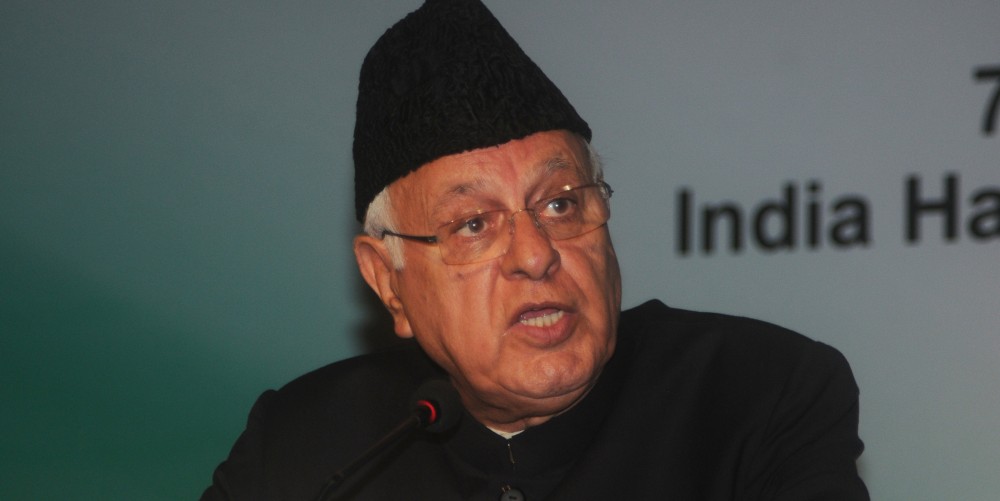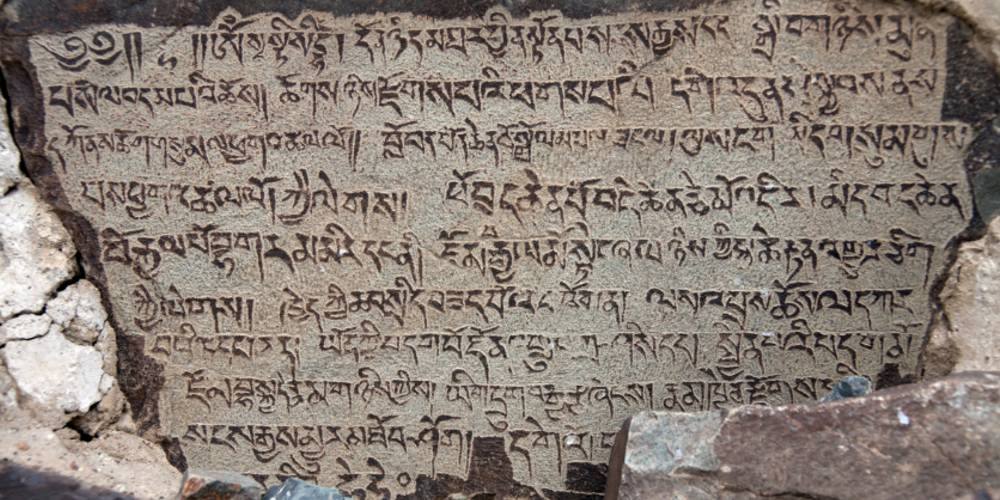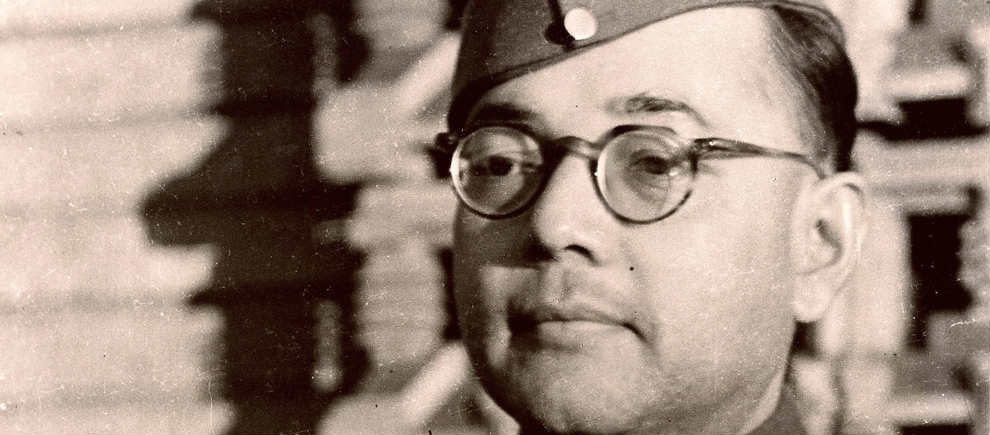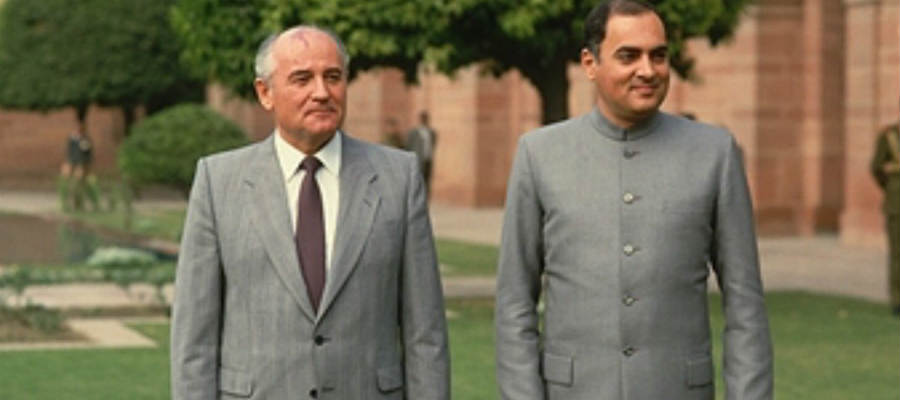Canary Trap presents an unconventional account of Kashmir by filmmaker and author Shiv Kunal Verma. The author of the highly acclaimed ‘1962: The War That Wasn’t’ and ‘The Long Road to Siachen: The Question Why’ takes us into the back alleys of history and based on established historical facts and his own personal experiences, he weaves together not just a picture of what has been happening in the disturbed state but also how things can and should pan out.
This is the second part of the series.
BY SHIV KUNAL VERMA
There is a road that runs from Roing to Anini in Arunachal Pradesh that goes over the Mayudia pass. Accompanied by KK, I was shooting images for my northeast trilogy of books and we crossed over with some difficulty owing to the patches of snow and got to Hunli, a small hamlet where a handful of gaon buras were awaiting our arrival. The previous day (and night) had been spent photographing with the Idu Mishmi in Roing and I was looking with some apprehension towards another round of aka drinking, but if you are to be a sworn part of a brotherhood, drink aka you must. I was thankful we had been given the guest house reserved for the governor who had left in a Mi-172 helicopter the previous evening, for at least KK was rested and fully fit for what was going to be a real test of character. The local aka, with a slight twang of oranges, was to put it mildly, interesting.
Beyond us lay the virtually inhabited Dibang Valley and the last outpost of Anini, beyond which lay the Yonggyap La and the Andra La, passes traversed by Captains Morshead and Baily when they surveyed the watershed between Tibet and British India ninety-eight years ago. The motely gathering of gaon buras in their assorted hats were in a jovial mood, for they had been tippling away since day break! The previous day, after the governor had taken off from Roing, it appeared he had made a stop at Hunli where the accompanying chief guest, Dr Farooq Abdullah had addressed the motely gathering.
‘So what did he say,’ I asked. It was more of a perfunctory question, the sort you tend to make because the conversation leads you to it. KK, his head tilted in an attentive manner, was also listening. One of the gaon buras then said (spoken Hindi in Arunachal is excellent), ‘he spoke of Kashmir.’ No major surprise there, since Dr Abdullah had not only been the Chief Minister of J&K, he was the son of Sheikh Saab, the ‘Lion of Kashmir’ and his son had also followed in his shoes. There must have been the odd gap here and there, but the Abdullahs’ had always been an integral part of the power equation ever since Maharaja Hari Singh’s rule had come to an end in 1947.
A video camera suddenly appeared and it was cued with some difficulty. Then there was Dr Abdullah, in his full oratory glory: ‘Kashmir mein hum Pakistan se kehte hain… hum par bum dalo… goli chalao… phir yeh Hindustan ki hukumat tokri mein bhar bhar ke paise laati hai… aap ke dono tafraf Cheen hai… aap un se kaho aap par bum giraye… missile chalain… phir dhekho’ (In Kashmir we have Pakistan next to us. We ask them to bomb and fire at us. Government of India then gives us lots of money. You have China on two sides… ask them to do the same.’ KK’s mouth was wide open… and I suspect so was mine. To make matters worse, the camera cut to His Excellency, a former army chief of the Indian Army. This cannot be happening–I remember the thought flashing through my head.
‘Give me the tape’, I said to the gaon buras trying to keep the tone casual, but seeing KK and me exchange glances, the video camera had disappeared, the owner having set off to ‘make a copy’. Needless to say, no one wants to cross swords with a constitutional authority, so we never saw the camera man again. Unfortunately, I had been around long enough in Kashmir to know that the dear Dr Abdullah, for once in his life, was being candidly truthful!
Fresh out of college, embarking on a new life, I had driven into the Kashmir Valley in the summer of 1981 curled up on top in what truck drivers liked to call a tool box, which was above the cabin. The heat and dust of the plains left behind, we crossed the Banihal tunnel and the valley opened itself up and engulfed whoever entered it into its fold. It was, to put it mildly, beautiful! The Jhelum languid, almost placid, the tall poplar trees, indigo growing in the fields, carts drawn by horses… and then suddenly there was Srinagar with its chinar-lined avenues and the wooden Tourist Reception Centre. My boss was Colonel ‘Papa’ John Weikfield, loved by one and all, and our office was the quaint annexe of Nedou’s Hotel that also housed the residence of Sheikh Abdullah. Tiger Tops Mountain Travel was a high-end Nepal-based tourism company, with a footprint in the Valley and another in Ladakh. I was the new kid in town, and my job would be to recce and mark out old trails between the two regions and see if they could be developed as viable trekking routes.
Three wars had been fought over Kashmir with Pakistan but life in the early 1980s was as idealistic as it could get. The Dal Lake, the Boulevard, the houseboats on the Nagin… gold finches on thistle, alpine flowers everywhere, the slopes of Dachigam where Hangul roamed free and Black Bears inhabited the oak trees… and trout the size of your arm that were clearly visible in the fast flowing crystal clear streams. I had the bungalow next to Shalimar Gardens and the sunsets on the Dal Lake would turn everything into a shimmering gold.
‘It’s an illusion,’ Papa John would say as we drove in his Land Rover through the remoter parts of the Valley looking for off-beat rivers to fish, suddenly aware of the fact that the villages in the countryside had been bypassed by development in any form. ‘The corruption levels in the state has created an economic disparity which is going to create mayhem! The administration has forgotten what happened in 1947 and 65. Money is pouring in, but it never goes beyond a select few.’
On the other hand, the select few–the heaven born–were all around us. The largest bungalows belonged to the oldest serving political families, and they drove in and out of houses with police pilot cars clearing the way for them and sometimes even their extended families. As time passed, one began to realize just how deep the rot was. Even to get a fishing license on the Bhringi or the Lidder, one had to slip in a small bribe.
Days passed. One got to see various parts of the Valley, and once the actual recce trips began, the surrounding areas including the areas south of the Pir Panjal, be it Poonch-Rajauri-Naushera to the west or Kishtwar towards the east all came into one’s gambit. As these real-time geographical lessons unfolded, so did the historical perspective begin to emerge. Following maps from Zorawar Singh’s time, I first crossed into Zanskar after traversing the 17526 ft Umasi La in 1981. I was extremely curious to see what Kargil looked like, the Balti town having seen a fair share of fighting in 1948, 65 and 71. At that time the information available on some of these events was virtually non-existent.
It had become routine–trek up from the Kashmir valley into Ladakh, then fly back to the Valley, loaf around for a few days, then head back up again. Papa John was a great friend of Sheikh Saab and once he heard I had crossed Umasi La, he invited me to have breakfast with him at the Nedou’s Hotel dining room and brief him about the trip. On the other hand, I knew little about Kashmir’s history at that stage, but did ask him about the tumultuous days when the raider columns were on a rampage and he was organizing a local militia for the defence of Srinagar. He said the incoming raiders had held themselves up looting and raping Hindu, Sikh and even Muslim girls and the fact that they went back to Muzaffarabad to deposit the loot, saved the city of Srinagar from a fate that even then made him shudder. First time I heard of the Battle of Shalateng situated between Baramula and Srinagar was from Sheikh Saab, who said the raider’s leadership was enjoying themselves shooting ducks at Hokarsar Lake, Maharaja Hari Singh’s private hunting reserve, which allowed the Indian Army to start its fly in.
I don’t recall what else I said to the CM, but Papa John called me to his cabin shortly thereafter and said you don’t go on and on about corruption, especially fishing licenses, because now the fisheries guys were ‘annoyed’ with us. He also told me not to tell Sheikh Saab that the villages were in such abject poverty that they were ripe for a Che Guevara. ‘You think he needs to hear it from you? He knows all this.’ I sulked for a while, but when Sheikh Saab called me again for breakfast, Papa John just conveyed the message without comment, his eyes imploring me not to make an ass out of myself or Tiger Tops by extension!
Then a year later, Sheikh Saab died in September 1982. By then we had shifted our office from Nedou’s Hotel to a houseboat, the Star of Zanzibar, which was moored a hundred metres upstream of Zero Bridge. Dr Farooq Abdullah was at the time a Member of Parliament and he was in and out of England. He seamlessly took over as the new chief minister and ‘dynastic politics’ made its advent into Kashmir. It hardly raised eyebrows since Mrs Gandhi had succeeded Nehru at the Centre and Indians had since been conditioned to accepting these things in their stride. To be fair, it wasn’t just the Abdullahs, the second generations of others were also lining up. Mufti Mohammad Sayeed and his brood would follow suit, and so would many other with lesser pedigrees.
Not surprisingly, within seven years, Kashmir was ripped apart. Just exactly what happened, who did what to whom, it’s a well-known sordid story. The centre, the state, they were all involved, each one quite willing to sleep with the enemy to achieve their short-term objectives. Watching from the side-lines, it was quite obvious what was happening and yet, no one who was entrusted with the well-being of the people, was willing to step up to the plate. Kashmir always was a political problem, not a military one. I happened to be in Srinagar in 1989, my wife and I having dinner at a friend’s house near the TRC when the first bomb went off. In the subsequent mayhem, gradually the para-military and the army got more and more sucked into the Valley. It reminded me of the lines from the popular song Hotel California ‘You can check-in any time you like, but you can never leave.’
Five years later, filming with the army, I realized the story had meandered far far away, developing a sordid ‘tail’ of its own that was now wagging the dog. The fighting was bitter, desperate at times, where hiding behind civilians the first shots would invariably come from nowhere, and then hell would break loose. During the thirty days I spent with the army in the Valley (apart from the four with the Hizbul Mujahideen), so many times suspects were apprehended who were known to be fringe cases–basically those not yet caught with a weapon. They would be handed over to the police, but even before the tired and exhausted troops could make it back to their camps, these guys would be released presumably under pressure from the top. After all, if you ask Pakistan to ‘bum maro aur goli barsao’ their wards had to be looked after.
Casualties mounted, soldiers and people died. I doubt if there is anyone in the country today who is not touched by the tragedy that began to unfold in Kashmir that saw new benchmarks of cruelty. Everyone was a victim, be it the local Muslim population, Kashmiri Pandits, Hindus, Sikhs or even in some cases foreigners. Pakistan, with the perennial support of China, kept the pot boiling. While the CRPF, RR units and the Army fought day and night, the people of Kashmir struggled to walk the tightrope between gun toting thugs and the security forces. Everyone seemed affected but one could not help but feel that those who could do something were particularly interested in a political solution. ‘Bum maro aur goli barsao… tokri bhar ke paisa ayega!’ (Keep the firing going… money will come).’
Just how pathetic the situation was can be gauged from the fact that in 1990 thirteen unarmed people were gunned down from a moving car. Four of them, IAF personnel including Squadron Leader Ravi Khanna, were killed while the other nine were wounded. The incident happened at a time when there was Governor’s Rule in the state. Almost everyone knew that the man responsible for the killings was Yasin Malik, the founder of the Jammu and Kashmir Liberation Front (JKLF) who was also involved in the kidnapping of Rubaiyya Sayeed, the daughter of the then Union Home Minister Mufti Mohammad Sayeed. Yet, he would go on to emerge as an important cog in the state’s politics.
Finally, when Malik bragged to a TV channel in 2019 how he had killed the Air Force personnel, were charges finally filed against him and he now awaits trial in Tihar jail. As they say in golf, one of Dr Abdullah’s favourite sports, in Kashmir that seems par for course! In the meantime, last week in a statement the National Conference, PDP, Congress, CPI (M) all reiterated their demand for reverting to the special status of J&K as it existed on 4 August 2019. The wheels of the circus continue to churn on…!
(This piece was first published on Sunday Guardian website. Canary Trap has republished it with the permission of the author Shiv Kunal Verma. Verma is the author of the books ‘The Long Road to Siachen: The Question Why’ and ‘1962: The War That Wasn’t’. The opinions expressed by the author and those providing comments are theirs alone, and do not reflect the opinions of Canary Trap or any employee thereof)
Canary Trap is on Telegram. Click here to join CT's Telegram channel and stay updated with insightful and in-depth content on Security, Intelligence, Politics, and Tech.



